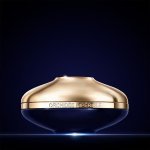Hermès publicized its Q3 results on Wednesday, October 22, revealing turnover gaining 5% yearly to reach EUR 3.9 billion — “a mild enhancement compared to the preceding quarter, notably in Europe, the Americas, and Asia.” The upswing was extensive across most sections, save for the Watchmaking and the Fragrance & Cosmetics areas, which persisted in their downturn.
“Looking ahead, notwithstanding the economic, geopolitical, and monetary instabilities globally, the company reaffirms an optimistic target for revenue expansion at consistent exchange rates,” the group conveyed in a press communication.
Hermès, similar to its competitors, experienced obstacles from unfavorable currency valuations, which impacted declared income. With exchange rates held constant, turnover escalated by 10% during the third quarter.
Throughout the initial nine months of the year, sales advanced by 6.3% to EUR 11.9 billion (8.6% on a comparable basis).
Sales in Asia, not including Japan, edged up by 0.3% to EUR 1.59 billion during Q3 (+6.2% at consistent currency values) and grew in all nations, markedly in Greater China (namely, including Hong Kong, Macau, and Taiwan).
Income in the Americas region rose by 7.2% (14.1% at consistent exchange rates), reaching 714 million euros.
Within Europe (without France), sales improved by 8.3%, while in France, they mounted by 10.4% due to “continued momentum in every store,” as per the press notice.
Perfume and beauty lag behind
Hermès’s Leather Goods and Saddlery sector — the brand’s fundamental activity — registered an 8.1% leap in sales, totaling EUR 1.7 billion, propelled by ongoing interest in its signature Birkin and Kelly handbags, along with the triumph of fresh assortments.
Sales within the Ready-to-wear and Accessories domain amplified by +2% during the third quarter (6.6% at constant exchange rates).
The trading of fragrances and beauty items continued to diminish, decreasing by 8.6% in Q3 (-7.2% at steady currency values), culminating in a collective drop of 5.6% throughout the first nine months (-5% at consistent exchange rates). The firm linked this decline to an elevated comparative benchmark following the preceding year’s introduction of Barénia.




